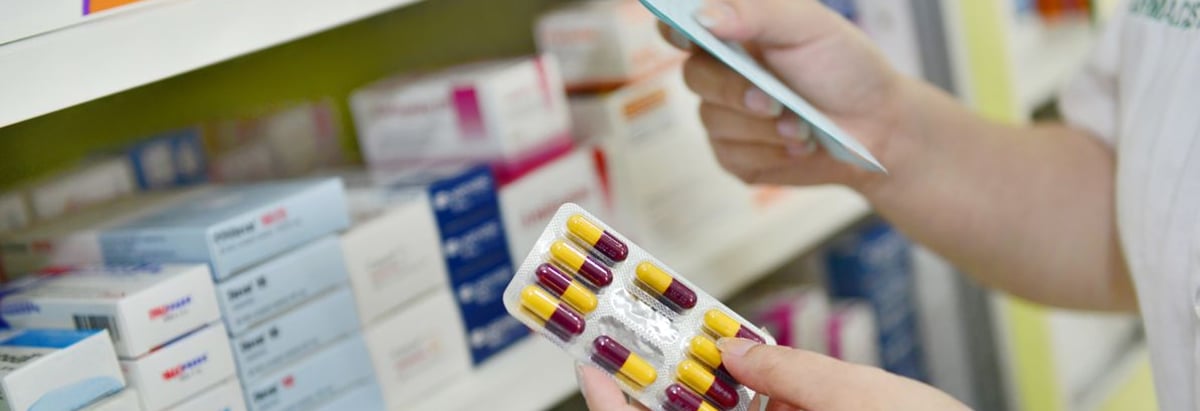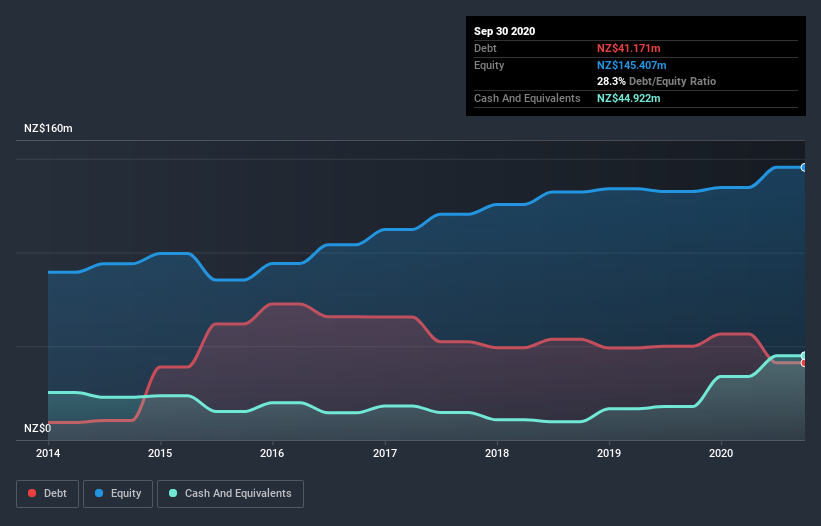- New Zealand
- /
- Food and Staples Retail
- /
- NZSE:GXH
Does Green Cross Health (NZSE:GXH) Have A Healthy Balance Sheet?

David Iben put it well when he said, 'Volatility is not a risk we care about. What we care about is avoiding the permanent loss of capital.' So it seems the smart money knows that debt - which is usually involved in bankruptcies - is a very important factor, when you assess how risky a company is. We can see that Green Cross Health Limited (NZSE:GXH) does use debt in its business. But is this debt a concern to shareholders?
Why Does Debt Bring Risk?
Debt and other liabilities become risky for a business when it cannot easily fulfill those obligations, either with free cash flow or by raising capital at an attractive price. Ultimately, if the company can't fulfill its legal obligations to repay debt, shareholders could walk away with nothing. However, a more frequent (but still costly) occurrence is where a company must issue shares at bargain-basement prices, permanently diluting shareholders, just to shore up its balance sheet. Of course, debt can be an important tool in businesses, particularly capital heavy businesses. When we examine debt levels, we first consider both cash and debt levels, together.
Check out our latest analysis for Green Cross Health
How Much Debt Does Green Cross Health Carry?
You can click the graphic below for the historical numbers, but it shows that Green Cross Health had NZ$41.2m of debt in September 2020, down from NZ$50.0m, one year before. But it also has NZ$44.9m in cash to offset that, meaning it has NZ$3.75m net cash.

A Look At Green Cross Health's Liabilities
The latest balance sheet data shows that Green Cross Health had liabilities of NZ$112.8m due within a year, and liabilities of NZ$115.9m falling due after that. On the other hand, it had cash of NZ$44.9m and NZ$34.1m worth of receivables due within a year. So its liabilities total NZ$149.6m more than the combination of its cash and short-term receivables.
This is a mountain of leverage relative to its market capitalization of NZ$160.3m. Should its lenders demand that it shore up the balance sheet, shareholders would likely face severe dilution. While it does have liabilities worth noting, Green Cross Health also has more cash than debt, so we're pretty confident it can manage its debt safely.
We note that Green Cross Health grew its EBIT by 22% in the last year, and that should make it easier to pay down debt, going forward. There's no doubt that we learn most about debt from the balance sheet. But you can't view debt in total isolation; since Green Cross Health will need earnings to service that debt. So if you're keen to discover more about its earnings, it might be worth checking out this graph of its long term earnings trend.
But our final consideration is also important, because a company cannot pay debt with paper profits; it needs cold hard cash. Green Cross Health may have net cash on the balance sheet, but it is still interesting to look at how well the business converts its earnings before interest and tax (EBIT) to free cash flow, because that will influence both its need for, and its capacity to manage debt. Over the last three years, Green Cross Health actually produced more free cash flow than EBIT. There's nothing better than incoming cash when it comes to staying in your lenders' good graces.
Summing up
While Green Cross Health does have more liabilities than liquid assets, it also has net cash of NZ$3.75m. The cherry on top was that in converted 123% of that EBIT to free cash flow, bringing in NZ$67m. So we are not troubled with Green Cross Health's debt use. The balance sheet is clearly the area to focus on when you are analysing debt. However, not all investment risk resides within the balance sheet - far from it. Be aware that Green Cross Health is showing 1 warning sign in our investment analysis , you should know about...
At the end of the day, it's often better to focus on companies that are free from net debt. You can access our special list of such companies (all with a track record of profit growth). It's free.
If you decide to trade Green Cross Health, use the lowest-cost* platform that is rated #1 Overall by Barron’s, Interactive Brokers. Trade stocks, options, futures, forex, bonds and funds on 135 markets, all from a single integrated account. Promoted
New: Manage All Your Stock Portfolios in One Place
We've created the ultimate portfolio companion for stock investors, and it's free.
• Connect an unlimited number of Portfolios and see your total in one currency
• Be alerted to new Warning Signs or Risks via email or mobile
• Track the Fair Value of your stocks
This article by Simply Wall St is general in nature. It does not constitute a recommendation to buy or sell any stock, and does not take account of your objectives, or your financial situation. We aim to bring you long-term focused analysis driven by fundamental data. Note that our analysis may not factor in the latest price-sensitive company announcements or qualitative material. Simply Wall St has no position in any stocks mentioned.
*Interactive Brokers Rated Lowest Cost Broker by StockBrokers.com Annual Online Review 2020
Have feedback on this article? Concerned about the content? Get in touch with us directly. Alternatively, email editorial-team (at) simplywallst.com.
About NZSE:GXH
Green Cross Health
Provides health care and advice services to communities in New Zealand.
Good value with proven track record and pays a dividend.
Market Insights
Community Narratives



